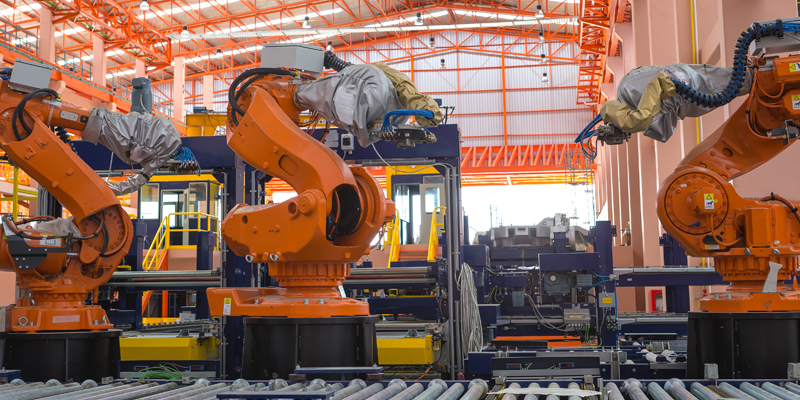Popular Manufacturing Applications for Robots
June 27, 2016
From Robotic Welding to Automated Handling, How Robots are Used Today
Given robots’ incredible speed and efficiency, more and more processes are becoming automated in manufacturing environments. While today’s general fabrication facilities don’t quite resemble “The Jetsons” (these robots aren’t serving meals – yet), vast improvements have been made to the precision and durability of robotic units. Here are some of the most popular applications of robotic technology in manufacturing.
Arc Welding – Arc welding uses a power supply to create an electric arc between an electrode and base material to melt metals at the connection point. While arc welds can be extremely uniform and clean, the process itself can be very dangerous, leading it to become one of the most popular applications of robots for welding.
Materials Handling – Also common in automotive manufacturing, specifically assembly lines, materials-handling robots are used to move, pack and select products. They also can automate functions involved in the transferring of parts from one piece of manufacturing equipment to another. These robots are often used to replace manual operators for tedious, repetitive or dangerous tasks.
Metal Cutting and Finishing – Robots can vastly improve the production time required to perform various metalworking processes such as cutting, grinding and polishing. What would take a person 30-45 minutes can be completed by a robot in as little as two. As with most robotic processes, automated metalworking greatly decreases the amount of materials wasted.
Painting – A third common robotic process in automotive manufacturing environments, robotic painting, is used to increase quality and consistency of products while maximizing the efficiency of materials used. The most accurate robots can provide uniform film builds and exact thicknesses.
Spot Welding – Resistance spot welding joins two metal surfaces with heat produced by an electric current at the weld spot. This melts the metal and forms the weld. The materials’ properties determine the amount of energy used. Robotic spot welding is commonplace in automotive manufacturing.
Keeping Up with Today’s Robotic Processes
It’s important to maintain an optimal environment for robots in order to maximize their efficiency. For instance, in arc welding, human welders keep the arc on for 30 percent of their shift, but that number rises to 90 percent with robotic systems. This produces a vast amount of dust and fume, requiring vigorous air filtration.
RoboVent is committed to developing systems that increase these kinds of efficiencies. Our innovative designs—from SparkOut fire suppression technology to the eTell control panel with built-in diagnostics—help our customers achieve the highest level of efficiency in some of the most demanding production environments. Plus, we offer specific units engineered for robotic processes. Learn more.
